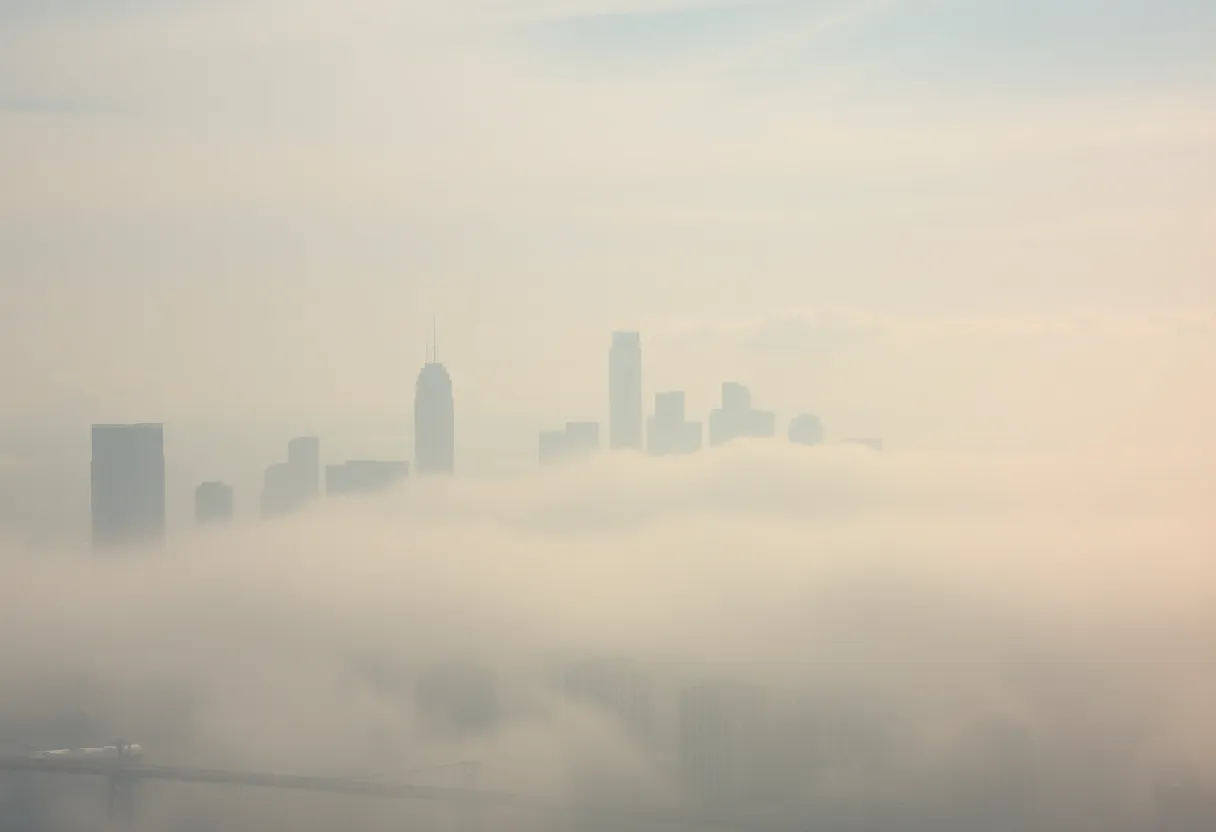News Summary
Residents of Houston experienced unusual hazy skies recently, raising questions about their cause. While dust storms affected North and Central Texas, local experts clarified that the haze was due to sea fog trapped by thermal inversion. Despite poor visibility, favorable winds are expected to clear the skies soon. Meanwhile, West Texas faced severe dust storms causing travel disruptions and air quality concerns. Shelter-in-place orders were issued in New Mexico due to rapidly shifting weather conditions.
Houston’s Hazy Skies: What’s Going On?
On Friday, residents of Houston stepped out to a rather peculiar sight—a hazy sky that led many to wonder about its origins. While the uncharacteristically murky atmosphere left people scratching their heads, a closer look at the surrounding weather conditions offered some insights.
Dust Storms Sweep Across Texas
That same day, dust storms were causing a ruckus all over North and Central Texas. Satellite images showed swirls of dust making their way across the Texas Panhandle and into other regions. However, the local weather experts quickly stepped in to clear the air. The National Weather Service noted that the haze over Houston wasn’t directly linked to those remote dust storms, which was a relief for many residents.
What’s Causing the Haze in Houston?
So, if it isn’t the dust from distant storms, what’s responsible for the foggy blanket hanging over the city? Those in the know pointed to surface winds in Southeast Texas blowing in from the south-southeast. This is significant because it brings in moisture from the Gulf, contributing to the hazy conditions. The real kicker is that the haze in Houston is likely a result of sea fog being trapped underneath a thermal inversion—a phenomenon that occurs when a layer of warm air traps cooler air near the surface.
When Will Things Clear Up?
Good news is on the horizon! Weather forecasts suggest the haze should begin to lift as wind directions change, which is expected to happen by Saturday morning. So, don’t pack away those sunglasses just yet—clearer skies might be just around the corner!
The Situation in West Texas
Meanwhile, a different story was unfolding in West Texas. A powerful dust storm, stoked by strong Pacific winds, made its way through the area on the following Tuesday. Residents there reported gusts reaching an eye-popping 60 mph in Midland-Odessa and 59 mph in San Antonio. The strong winds whipped up dust and dirt from arid regions, creating extremely poor visibility and making air quality take a nosedive.
Travel Chaos Due to Wind and Dust
The dust storm’s impact was so severe that it prompted ground stops at Dallas-Fort Worth and Austin-Bergstrom International Airports, leading to more than 500 flight cancellations. Can you imagine being stuck at the airport because of a storm brewing miles away? Visibility in Dallas dropped down to just 2 miles, making it feel a lot like foggy weather—yikes!
Air Quality Concerns
Things were seriously dicey for people moving around in those conditions. San Antonio reported air quality levels reaching the “unhealthy” mark with an AQI of 110. Health officials cautioned that anyone with respiratory issues should think twice about being outdoors. If you had to step outside for some fresh air, it turned into a huge risk.
Shelter-in-Place Orders and Closing Thoughts
In New Mexico, they weren’t taking any chances either. A fast-moving dust storm, known colloquially as a haboob, led to shelter-in-place orders in various parts of the state, highlighting how serious these weather changes can be. It’s wild to think how quickly conditions can shift, especially with high winds continuing to swirl through South and Central Texas.
For those in Houston, it’s anticipated that the wind speeds will drop again after sunset, paving the way for improved air quality by the following morning. In the meantime, locals are encouraged to stay indoors, especially those who may be sensitive to air conditions. As always, keep an eye on the skies—you never know when Mother Nature might surprise you!
Deeper Dive: News & Info About This Topic
HERE Resources
Additional Resources
- KHOU: Houston’s Haze
- Wikipedia: Dust storm
- Houston Chronicle: Dust Cloud
- Google Search: Texas dust storm
- AccuWeather: Dust Storm in Texas
- Encyclopedia Britannica: Air Quality
- KCEN: Haboob Dust Storm
- Google News: Haboob
- Space City Weather: Saharan Dust

Author: STAFF HERE HOUSTON TX WRITER
The HOUSTON STAFF WRITER represents the experienced team at HEREHouston.com, your go-to source for actionable local news and information in Houston, Harris County, and beyond. Specializing in "news you can use," we cover essential topics like product reviews for personal and business needs, local business directories, politics, real estate trends, neighborhood insights, and state news affecting the area—with deep expertise drawn from years of dedicated reporting and strong community input, including local press releases and business updates. We deliver top reporting on high-value events such as Houston Livestock Show and Rodeo, Art Car Parade, and Chevron Houston Marathon. Our coverage extends to key organizations like the Greater Houston Partnership and Houston Area Urban League, plus leading businesses in energy and healthcare that power the local economy such as ExxonMobil, Schlumberger, and Houston Methodist. As part of the broader HERE network, including HEREAustinTX.com, HERECollegeStation.com, HEREDallas.com, and HERESanAntonio.com, we provide comprehensive, credible insights into Texas's dynamic landscape.





